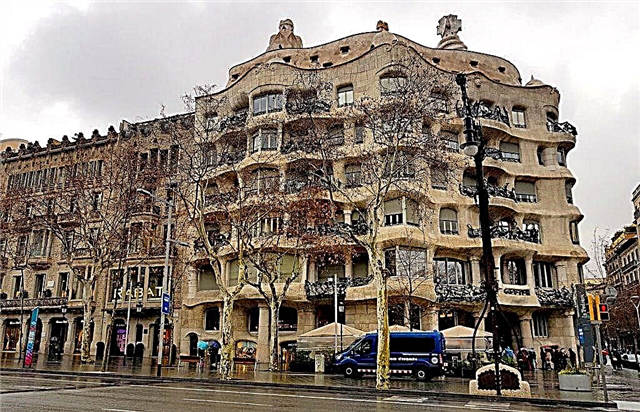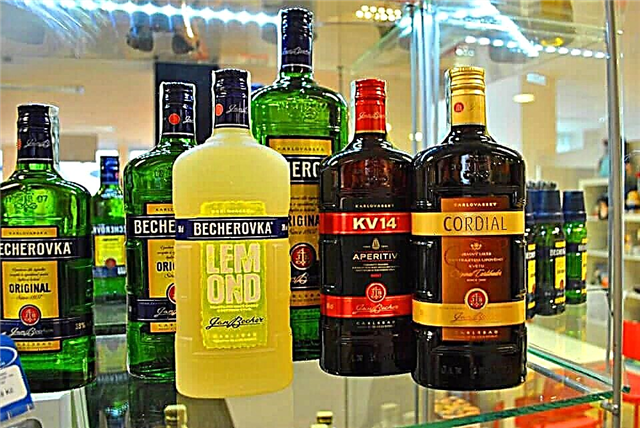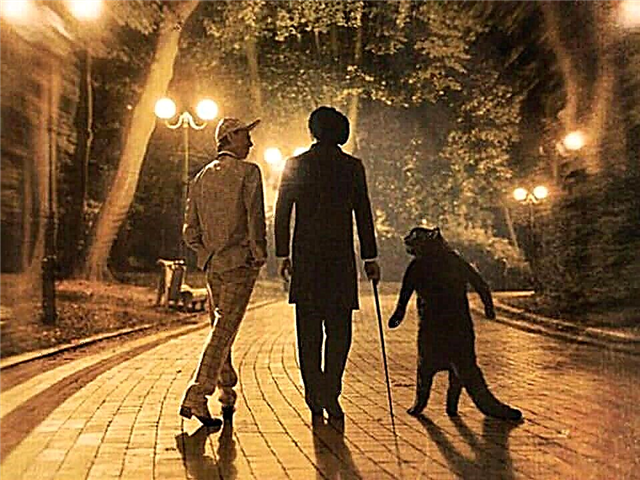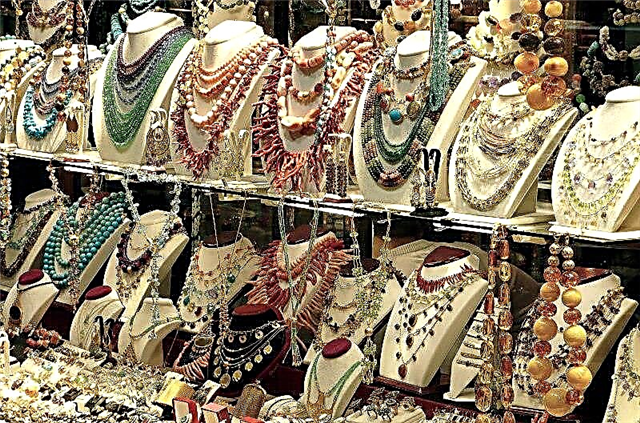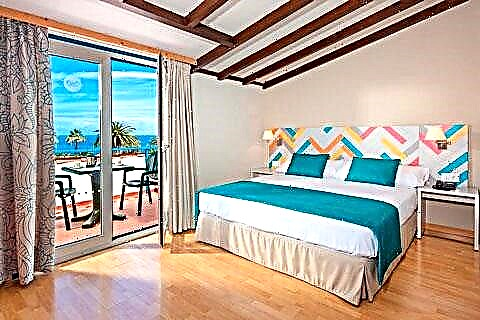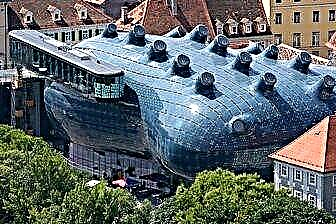Austrian Graz will be able to compete with the glittering Vienna and the operatic Salzburg, although this city is less known and popular with tourists. In Graz, travelers will fully enjoy the architectural beauties of the imperial period, as well as touch the distant history of the Middle Ages in the Schlossberg castle and on the ruins of the Gösting fortress.
The federal state of Styria, whose capital is Graz, is known for its excellent wines. Connoisseurs note that local varieties are very creative and original. They can be tasted in all restaurants and bars in the city.
Perhaps, Graz became known to the general public, among other things, due to the fact that A. Schwarzenegger, an idol of several generations, an actor, bodybuilder and businessman, was born and raised here.

The best hotels and hotels at affordable prices.
from 500 rubles / day
What to see and where to go in Graz?
The most interesting and beautiful places for walking. Photos and a short description.
Graz Town Hall
City Hall located on the central Hauptplatz square. The town hall, in the style of restrained classicism, was erected in 1803. It should be noted that the architectural development of Hauptplatz dates back to an earlier period, therefore the Town Hall can be considered a relatively new building. The central square is home to traditional Christmas markets. During normal times, there are also colorful counters with local delicacies.

Landhouse
Mansion in a Venetian style with external boxes and a Renaissance courtyard designed by architects D. del Allio and B. di Bosio. The building was rebuilt under the guidance of these Italian craftsmen in the 16th century. Landhouse was intended for local parliament meetings. The city's legislative assembly is still located there. The interiors are made in the Baroque style and richly decorated with stucco.

Schlossberg castle
The fortress is located on a hill 450 meters high. It became famous throughout Europe for the fact that it was never taken during a siege since its foundation in the XII century. Once the city of Graz was the central city of the Austrian lands, so the castle was necessary for defense purposes. On the Castle Hill there is a 28-meter clock tower Urturm. All four facades of the tower are equipped with hour dials. The chronometer of the tower has been in operation since the beginning of the 18th century.

Eggenberg Castle
A magnificent 17th century palace, one of the main attractions of Graz and the surrounding area. The castle was built for Prince Eggenberg, an advisor to Emperor Ferdinand II, who had a huge influence at court. The aristocrat was seriously interested in astrology, therefore the architect D.P. de Pomis created the project of the castle in the style of "Renaissance harmony". The building has four towers - symbols of the seasons, 52 rooms - the number of weeks in a year, 24 general halls, which corresponds to the number of hours in a day.

Ruins of the Gösting fortress
A few kilometers from Graz is the once powerful Gösting fortress, which covered the approaches to the suburbs and was an important strategic structure. The castle was built in the 11th century and stood until the 18th century, when a lightning strike completely destroyed its powerful walls. The discharge landed directly in the powder store, and as a result of a powerful explosion, Gösting was reduced to ruins. Only the chapel of St. Anne has survived from all the buildings.

Kunsthaus
Museum of 2003, which contains a collection of contemporary art of the second half of the XX - early XXI centuries. The building was designed by architects P. Cook and C. Fournier. From a distance, the futuristic structure resembles a giant submarine or a whale. The museum does not have its own permanent exhibition. Its space is used to organize temporary exhibitions on cinema, photography, contemporary architecture, painting and design.

Arsenal
The building for the armory was erected in the 17th century by A. Solari. The arsenal contained stocks of weapons that were planned to be distributed to the population in the event of a sudden enemy attack. Now on its territory there are several thousand rifles, rifles, pistols, cannons and other firearms. Also in the arsenal there are halls with armor and tournament weapons of the knights.

Arnold Schwarzenegger Museum
Austrian Graz is the birthplace of the famous American actor A. Schwarzenegger. In 2011, for fans of the work of this extraordinary person, a museum was opened on the territory of the very house where Arnold was born and spent his youth. This small mansion is located on Lake Tal in the village of the same name. The museum exposition consists of the actor's personal belongings, original furnishings, as well as artifacts from the most famous films where Arnold was filmed.

Opera theatre
The building for the opera stage in Graz was erected in the 19th-20th centuries. not far from the city park. Since the 17th century, theatrical performances have been given on the territory of the coach house of the Habsburg residence. The first theater was built in 1776. It is known that V.A. Mozart. Later, this room was given over to a dramatic scene, which is still in operation. The modern opera is built in the neo-baroque style.

Cathedral of Saint Egidius
The main Catholic church in Graz, an architectural monument of the 15th century. The construction of the church began simultaneously with the construction of a castle for Emperor Frederick III. In the 16th century, the temple became the property of the Jesuit order. The church has been serving as a cathedral in Graz since the 18th century. In the 20th century, the restoration of the interior was carried out under the direction of K.R. Lorenz.

Basilica of Mariatrost
The temple is located on the top of a hill that rises almost 500 meters above the city. The church is an important pilgrimage center for Austria. It was built at the beginning of the 18th century in the late Baroque architectural style. The main facade consists of two symmetrical 60-meter towers and a portal of the main entrance. The interiors are distinguished by lush decoration in the best traditions of the Baroque style.

Church of the Heart of Christ
The largest Catholic church in Graz. The building is built in the picturesque late Gothic style, which is characterized by a high central nave and curly stained glass windows. The church was erected in 1887 according to the project of G. Hauberrisser. In 1988, reconstruction was carried out. The temple is considered the third largest in Austria. Its unique stained-glass windows are a rather rare element, not typical for church building in Styria.

Mausoleum of Emperor Ferdinand
The family tomb of the Habsburg dynasty, erected in the 17th century on the site of religious buildings. The mausoleum was designed by the Italian D.P. de Pomis, therefore the building has some features of Florentine architecture. Subsequently, under Leopold I, the grandson of Ferdinand II, the complex was finally completed. The emperor himself and his mother Maria of Bavaria are buried in the crypt.

Murinsel
An entertainment complex located on an artificial island in the middle of the Mur River. The structure is connected to the banks by means of bridges. In Murinsel, under a glass dome, there is a restaurant, a children's area "Adventure Island" and an amphitheater. All structures of the complex are mounted on a mobile platform that can move along the river. The Murinsel space is designed for 350 people.

Street "Sackstrasse"
City street, which received the unofficial name "Art Mile" due to the large number of art workshops, exhibition galleries, studios and art cafes. There are also several shops selling antiques and jewelry.Sackstrasse is the best time to visit before Christmas, as the street decor is most picturesque during this time.


